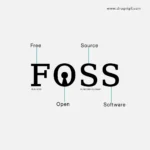This blog features:
- Service provider in PV domain
- Key Elements of an Effective PV Service Provider
Table of Contents
Introduction
We’ve shared insights before on case handling, technology, and the evolving capabilities of pharmacovigilance systems.
But today, let’s take a step back — what does it really take to build a successful pharmacovigilance business from the ground up? How easy is it to start, how complex can it get, and what are the key elements that truly define an effective pharmacovigilance service provider?
An effective PV service provider
- Expert Drug Safety Team
- Strategic PV Advisory Board
- Continuous Inspection Readiness
- SOP Readiness
- Strong CAPA System
- Proactive Risk Management
- Responsive Communication
- Functional pharamcovigilance network
- On-Hand Training Resources
- Regulatory Compliance
- Al-time readiness
- All Necessary tech in place
“Building a strong pharmacovigilance service isn’t just about compliance — it’s about commitment. Commitment to vigilance, to quality, and above all, to patient safety.”
Expert Drug Safety Team
No process can function effectively without skilled personnel — and pharmacovigilance is no exception.
The foundation of any successful PV service provider lies in having a dedicated Drug Safety Management Team. This team is essential for managing the complete end-to-end pharmacovigilance process, ensuring accuracy, compliance, and timely delivery at every stage.
Strategic PV Advisory Committee
Every pharmacovigilance center benefits from the guidance of a PV Advisory Committee. This committee supports key functions such as data collection, safety assessment, and the dissemination of findings.
Ideally, it should be composed of professionals with multidisciplinary expertise, bringing together scientific, clinical, and regulatory perspectives to strengthen decision-making and overall PV strategy.
Continuous Inspection Readiness
Maintaining inspection readiness** is crucial for success—whether it’s an unannounced visit from the US FDA or a scheduled inspection by the MHRA.
Being consistently prepared not only demonstrates compliance but also builds confidence in your operations. Conducting regular internal audits is one of the most effective ways to ensure systems remain inspection-ready at all times.
SOP readiness
As a pharmacovigilance service provider, having comprehensive and well-structured Standard Operating Procedures (SOPs) is non-negotiable. These SOPs form the backbone of your operations, ensuring consistency, compliance, and quality.
They must be regularly reviewed and updated to reflect current regulatory expectations, process improvements, and evolving best practices—key traits of a reliable and mature PV organization.
Strong CAPA System
Errors are inevitable—but how you handle them defines your quality. An effective Corrective and Preventive Action (CAPA) system ensures that every deviation is properly identified, documented, and analyzed for its potential impact on patient safety.
By implementing timely and appropriate corrective and preventive measures, you can minimize recurrence and continuously strengthen the quality and reliability of your pharmacovigilance processes.
Proactive Risk Management
Every business faces risks, but in pharmacovigilance, risk management goes beyond business continuity—it’s about patient safety and regulatory compliance.
Effective PV operations require a dual-layered approach: managing organizational and operational risks while proactively identifying, assessing, and mitigating safety-related risks. A well-structured risk management framework ensures both business stability and the protection of public health.
Responsive Communication
Effective communication is key to staying compliant and informed. Regulatory authorities frequently issue alerts, updates, and new guidance documents that impact pharmacovigilance practices.
Ensure you are subscribed to email notifications from all relevant regulatory bodies to stay current and implement necessary changes promptly.
Functional pharamcovigilance network
Building and maintaining a strong pharmacovigilance network is essential for collaboration, growth, and efficiency. PV service providers should actively engage with international drug monitoring bodies and related stakeholders.
Such partnerships enhance coordination, ensure compliance with global standards, and promote the sustainable development of pharmacovigilance systems.
On-Hand Trained Resources
Having well-trained staff is essential for any pharmacovigilance service provider. Your team should be knowledgeable about PV processes, regulations, and tools. Regular training ensures they stay updated and can handle tasks efficiently and accurately. Skilled and confident employees are the key to maintaining high-quality and compliant pharmacovigilance operations.
Regulatory Compliance
As a pharmacovigilance service provider, maintaining strict regulatory compliance is non-negotiable. Staying aligned with global and local PV regulations helps avoid unnecessary penalties, ensures credibility, and builds trust with clients and authorities alike.
All-time readiness
Constant operational readiness is vital for meeting client and regulatory expectations. Your team should be prepared at all times to manage safety reports, audits, and submissions—ensuring no missed deadlines or compliance lapses in regulatory communications.
All Necessary tech in place
Technology is the backbone of modern pharmacovigilance. Having the right systems—such as safety databases, MedDRA coding tools, quality control systems, literature search and review tools, and reference managers—ensures efficiency, accuracy, and compliance.
With the right tech stack in place, your organization can confidently handle any project or regulatory requirement that comes its way.
Ensure compliance & accuracy
Elevate your drug safety operations with Drugvigil — where vigilance meets innovation.
Choose precision. Choose Drugvigil.
Conclusion
Building and maintaining an effective pharmacovigilance service provider is both an art and a science. It requires the right blend of expert personnel, strong governance, regulatory compliance, continuous readiness, and advanced technology. Success in this field isn’t just about meeting requirements—it’s about fostering a culture of vigilance, quality, and accountability.
By ensuring all that given above requirements, you are well known a good pharmacovigilance service provider and you are ready for it.
In the end, excellence in pharmacovigilance is not achieved by chance, but by consistent readiness, continuous improvement, and unwavering commitment to patient safety.







Leave a Reply to Progress Of Our Startup And Where Do We Stand Currently? – Drugvigil's Blog Cancel reply